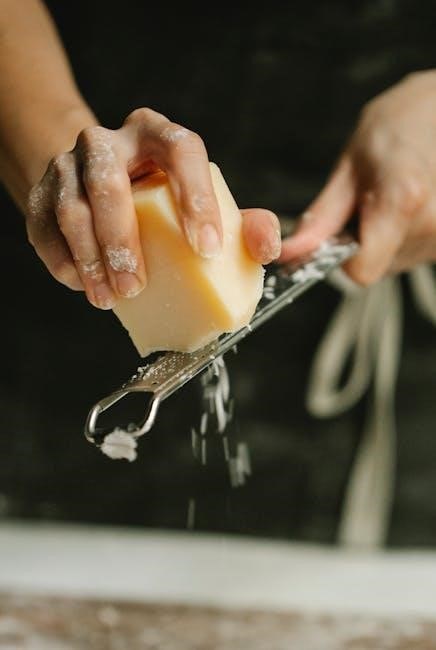Cooks often choose the shank portion of ham for its tender flavor and texture, following specific instructions for preparation and cooking methods to achieve perfect results always.
Understanding the Basics of Ham Shank Cooking
To understand the basics of ham shank cooking, it’s essential to know the different types of ham and their characteristics. The shank portion of ham is often preferred for its tender flavor and texture. Cooks should familiarize themselves with the various cooking methods, including baking, roasting, and glazing. Understanding the importance of temperature, cooking time, and liquid usage is crucial for achieving perfect results. A large piece of foil is often used to wrap the ham, and a roasting pan or baking sheet is necessary for cooking. By grasping these fundamental concepts, cooks can confidently prepare a delicious ham shank dish. With the right techniques and ingredients, a mouth-watering ham shank can be achieved, making it a perfect centerpiece for any meal or special occasion, and the results will be well worth the effort and time spent.

Preparation of Ham Shank for Cooking
Place a large piece of foil in a cake pan to prepare the ham shank for cooking with yellow mustard and brown sugar always.
Wrapping the Ham Shank in Foil for Baking
To wrap the ham shank in foil for baking, place a large piece of foil in a cake pan or baking dish, pressing it into the bottom and bringing the sides up to wrap the ham. This will help retain moisture and promote even cooking. The foil should be large enough to completely enclose the ham, with some extra foil available to fold over the top. By wrapping the ham shank in foil, cooks can ensure that the meat stays tender and juicy, while also preventing it from drying out during the baking process. Using foil to wrap! the ham shank is a simple and effective way to achieve delicious results, and it is a step that should not be omitted. Proper wrapping is essential for baking.
Cooking Methods for Ham Shank
Cooks use various methods including baking and roasting to prepare ham shank with great results always.
Baking the Ham Shank in the Oven
To bake a ham shank in the oven, cooks typically follow a set of instructions that involve preheating the oven to a specific temperature, usually around 325 degrees Fahrenheit. The ham shank is then placed in a baking dish or roasting pan, often covered with foil to prevent drying out. Some recipes call for a glaze or seasoning to be applied to the ham shank before baking, which can add flavor and texture. The baking time will vary depending on the size of the ham shank, but it is generally recommended to bake for 15-20 minutes per pound. By following these steps, cooks can achieve a deliciously baked ham shank with a tender and juicy texture. This method is a popular choice for cooking ham shank due to its ease and consistency of results.

Guidelines for Cooking Time and Temperature
Cooks follow specific temperature and time guidelines for shank ham, usually 15-20 minutes per pound at 325 degrees Fahrenheit for perfect results always.
Calculating Cooking Time per Pound of Ham Shank
To calculate the cooking time for a ham shank, cooks can use a general guideline of 15-20 minutes per pound at 325 degrees Fahrenheit. This means that for an 11.6-pound ham, the cooking time would be around 2 hours and 45 minutes to 3 hours and 32 minutes. It’s essential to note that these times are approximate and may vary depending on the specific ham and oven being used. By following this guideline, cooks can ensure that their ham shank is cooked to a safe internal temperature and is tender and flavorful. Using a meat thermometer can also help to ensure that the ham is cooked to a safe temperature, which is especially important for larger hams. This calculation method provides a reliable way to determine cooking time.
Using Broth, Juice, or Water for Roasting
Cooks add one cup of broth, juice, or water to the pan for roasting ham shank, enhancing flavor and moisture always perfectly.
Importance of Covering the Pan Tightly with Foil
Covering the pan tightly with foil is crucial when cooking ham shank, as it helps retain moisture and heat, ensuring the ham cooks evenly and stays tender. This method also prevents the ham from drying out, allowing the natural juices to circulate and infuse the meat with flavor. By covering the pan, cooks can achieve a perfectly cooked ham shank with a delicious glaze. The foil should be wrapped securely around the pan, creating a tight seal that locks in the flavors and aromas. This technique is essential for achieving a mouth-watering, fall-apart ham shank that is sure to impress. Properly covering the pan with foil makes all the difference in the cooking process, resulting in a truly exceptional dish. The importance of this step cannot be overstated, as it directly impacts the final product’s quality and taste.

Internal Temperature and Cooking Time
Cooks monitor internal temperature and cooking time closely for perfect results always using thermometers.
Ensuring the Ham Shank is Cooked to a Safe Temperature
Cooks must ensure the ham shank is cooked to a safe temperature to avoid foodborne illness. According to guidelines, the internal temperature should reach 160 degrees. This can be achieved by using a thermometer to check the temperature. It is essential to insert the thermometer into the thickest part of the ham, avoiding any fat or bone. The temperature should be checked at the end of the cooking time, and if it has not reached 160 degrees, the ham should be returned to the oven for further cooking. By following these steps, cooks can ensure the ham shank is cooked to a safe temperature, making it safe to eat and enjoy. Proper cooking techniques are crucial to prevent undercooked or overcooked ham.

Types of Ham Products and Their Composition
Ham products include various types like ham salad and Scotch style ham with specific composition requirements always being followed by manufacturers carefully every time.
Ham Salad and Scotch Style Ham Products
Ham salad and Scotch style ham products are popular variations, with ham salad requiring at least 35% cooked ham and Scotch style being a cured, uncooked, boned, and rolled whole ham. These products have distinct composition requirements, with chopped ham allowed in ham salad without appearing in the product name. Ham, Scotch Style, is either tied or in a casing, offering a unique texture and flavor profile. The specific ingredients and production methods used in these products can affect their overall taste and quality, making them a great option for those looking for a different ham experience. By understanding the composition and production of these products, consumers can make informed decisions about their ham purchases and enjoy a more satisfying culinary experience with various ham products available. This information is useful for cooks preparing ham shank portions.
